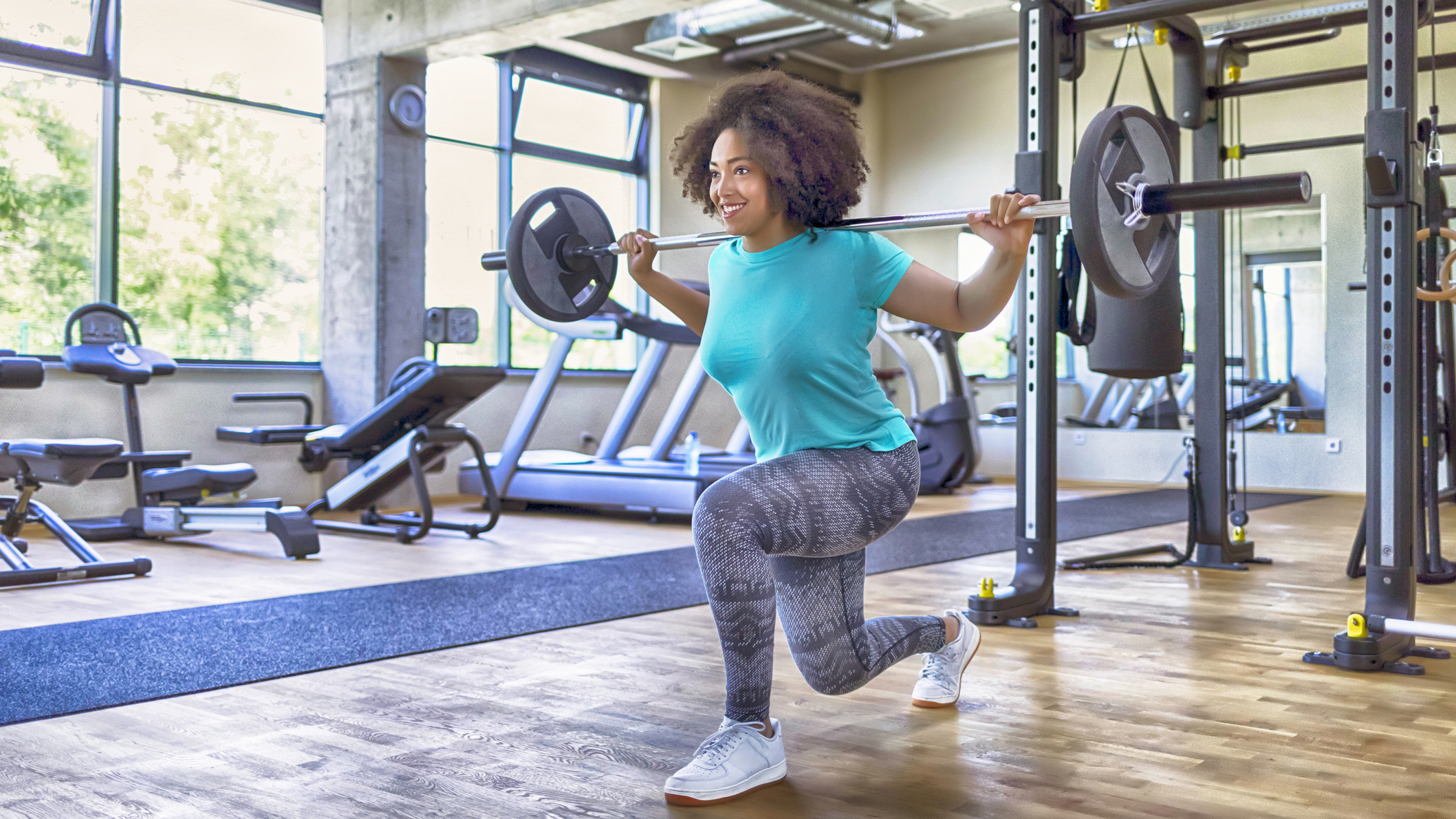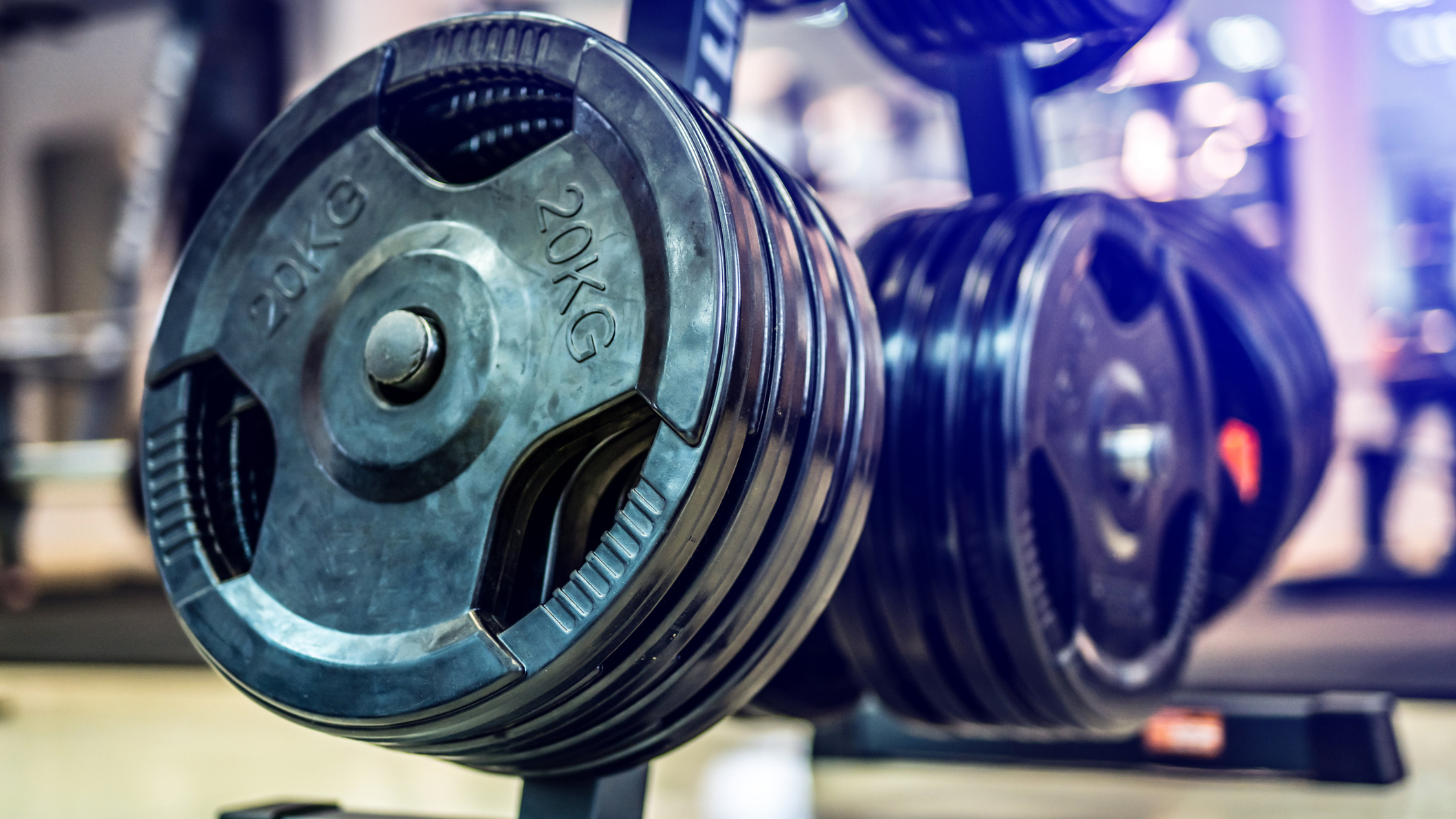How often should you lift weights?
We get the lowdown from an expert trainer on how often you should lift weights, if you should hit the gym daily, and how long it takes to see results

There’s plenty of research outlining the benefits of weightlifting, but one thing many of us don’t know is just how often you should lift weights. To try and get some clarity on the topic, we spoke to Chloe Trigg, an endurance athlete and head trainer at the Blok fitness studio.
Just getting started with weightlifting? We’d recommend investing in a pair of the best adjustable dumbbells, so you can try out different weight settings from your own home.

Chloe Trigg is an endurance athlete and the head trainer at BLOK, specializing in strength. She has worked in the fitness industry for five years, teaching both individuals and group classes, and is a level 3 qualified PT.
How often should you lift weights?
According to Trigg, the number of days you train each week should be based on how efficiently your body recovers from a session.
Most people who are new to lifting will need a day or so to recover, as your muscles will need to rest and repair – so newbies should do a maximum of two to three workouts a week. But if you’re already a regular at the dumbbell rack, you can probably lift up to five times a week, as your body will have adapted to this routine.

Trigg also says that you need to think carefully about what your goals are when you’re planning your weekly schedule. “Your training schedule and content will look different between building muscular strength versus muscle size,” she explains.
If you’re focused on building muscular size (hypertrophy) you’ll need to have a higher training volume in sets, reps, and lifting frequency. If you’re focused on functional strength, this will require a lower frequency of training, with fewer reps, but you’ll be lifting heavier weights.
How long does it take to see results from weightlifting?
How long it takes for you to see results will all depend on the results you are looking for and your body’s individual make-up, Trigg says.
Get the Fit&Well Newsletter
Start your week with achievable workout ideas, health tips and wellbeing advice in your inbox.
“If you are very new to weightlifting and your goal is to lift heavier weights, you will gain bigger and quicker results than someone who has been weightlifting for years, making their results more marginal and less frequent.”
This, she explains, is due to how adapted your muscles already are to weight lifting. When you first start out, your muscles are fairly pliable and the muscle fibers are more responsive to growth. If you’ve been lifting for a while, then your body will be well-adapted to handling the stress of lifting – so it will take a lot more effort and intensity to force a change.

Trigg advises that you work in training cycles of six weeks. Start with a max-out week, testing your limits to get a feel for your starting numbers. Then do five weeks of building, working through a structured program focused on progressive overload, which gradually builds in weight or reps.
“You could then finish with a de-load week to allow your muscles to recover fully before you re-test and see the progress you've made!” Trigg adds.
Is it OK to lift weights every day?
According to Trigg, it’s absolutely possible to lift weights every day, but newcomers should avoid this approach: “If your body is used to lifting or training every day then it will be able to withstand this. However, if you are new to training or lifting then you'll cause more stress than the body is equipped to recover from,” she says.
Trigg also advises that everyone needs a minimum of one or two recovery days a week. One of these should be a full rest day and the other can be an ‘active recovery’ day, which incorporates some easy movement.

If you’re currently lifting every day and not seeing any progress, Trigg recommends adjusting your training: “Try to avoid doing the same thing each day, break the muscle groups or movement patterns up to allow for rest, and always aim for fewer, higher-quality sessions over multiple, low effort or no-purpose workouts.”
Should you lift weights to lose weight?
Lifting weights can help with fat loss, but not necessarily weight loss. Muscle actually weighs more than fat, and since lifting weights has been proven to increase muscle size and density, weight lifting won’t necessarily make a difference on the scales if you’re judging your total weight loss by grams, pounds, or stones.
However, lifting weights can help you shift unwanted body fat, so if you’re judging your total weight loss by the amount of fat you lose, then lifting weights will have nothing but a positive effect. Plus, the bigger your muscle mass, the higher your base metabolic rate will be, which will increase the more calories you burn at rest, when you’re not doing anything.
Weightlifting can also increase something called exercise post-oxygen consumption (EPOC). This happens after a bout of strenuous activity and refers to when your body requires a higher level of oxygen and burns through extra calories even after you've finished a workout.
Here’s how it works: your body needs to reset to its normal, at-rest, metabolic state after your gym session. Essentially, it needs to replenish all the resources you used during your workout, rebalance your temperature and start repairing muscle tissue. All of these processes require oxygen (and energy) which is why you’ll burn through a decent amount of calories even once you’ve put down your weights. According to the American Council of Exercise, resistance training is particularly good at producing ‘a significant EPOC effect’.
Do you need to increase the amount of weight you lift?
Since the goal of lifting weights is to increase the functional ability and durability of your muscles, we want to challenge what our body can withstand by making our muscle fibers bigger, says Trigg.

“This is done by safely putting more stress on them than they are used to so they are forced to adapt to it,” she says. “To ensure they continue to strengthen and build, we need to increase stress on them as they adapt.”
However, as well as putting more weight through our muscles, Trigg explains that we can also look at things like time under tension, pauses, and loading muscles in a greater range of positions.
“It is good to vary how you are challenging your body and creating demand on the muscles, rather than just piling on weight through one movement every week,” she says. “This will ensure you create a more rounded and balanced muscle that is able to withstand a lot more and from varying directions.”
Lee Bell is a London-based journalist, copywriter, specializing in all things tech and lifestyle. He is also a qualified personal trainer. He started his journalism career a decade ago as a reporter covering the latest gadgets and innovations at tech tabloid The Inquirer. Lee went freelance in 2016 to broaden his expertise, moving into news, reviews and feature writing for a host of national print and online lifestyle titles such as GQ, Forbes, Esquire, Men’s Health, Wired, The Metro, and The Mirror. He has an insatiable appetite for travel, Dharma yoga, and the odd outdoor challenge.
-
 I do these two things every day to stay fit and healthy, says the newest star trainer on Chris Hemsworth's fitness app
I do these two things every day to stay fit and healthy, says the newest star trainer on Chris Hemsworth's fitness appHere's how Centr's Korey Rowe trains for longevity
By Sam Rider Published
-
 I thought sports weren't for me, until I realised they're a game-changer for ticking off cardio
I thought sports weren't for me, until I realised they're a game-changer for ticking off cardioI swapped HIIT and running for tennis—and I've never felt better
By Alice Porter Published
